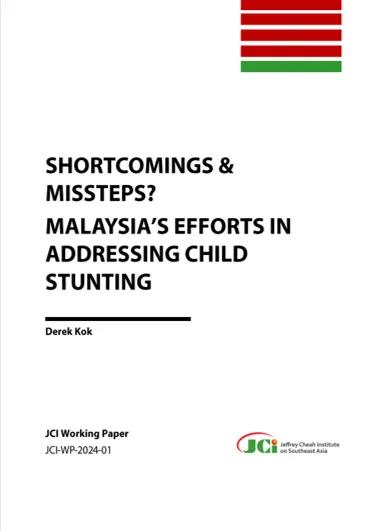JCI-WP-2024-01 Shortcomings & Missteps? Malaysia’s Efforts in Addressing Child Stunting
Despite the government’s policy introductions, the rate of child stunting in Malaysia has not improved, but in fact worsened to its 1999 level – this is in contrast to the steadily improving global rate.
Drawing from a review of recent evidence, this paper argues that this poor performance can be attributed, in part, to a global trend which erroneously views stunting as an individual-level nutritional diagnosis instead of its intended purpose as a statistical proxy for a population's general welfare. This approach leads to child stunting being viewed solely as a nutritional issue instead of a multicausal problem that is brought about by social determinants that require structural solutions.
In making this argument, this paper first provides the context of child stunting in Malaysia and its consequences at both the individual and national levels. It then proceeds to trace the changing definitions of stunting and how it evolved from a population-level mathematical proxy to become a biological diagnosis for nutrition at the individual/child level. Naturally, this leads to policy responses that focuses on individual parental behaviour with little impact on stunting rates.
Author(s)
The JCI Working Paper series is published to disseminate preliminary research findings and stimulate intellectual discourse on wide-ranging public policy issues, ranging from security to sustainability. The views expressed herein are those of the author(s) and do not necessarily reflect the views of the Jeffrey Cheah Institute on Southeast Asia.




